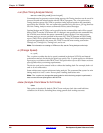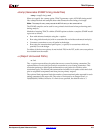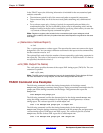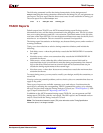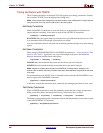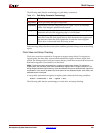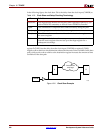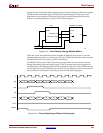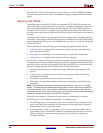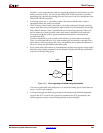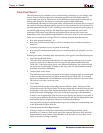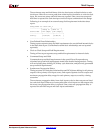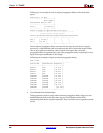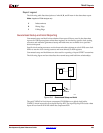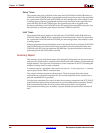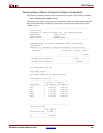
224 www.xilinx.com Development System Reference Guide
Chapter 12: TRACE
R
The clock skew Tsk is not accounted for in setup checks covered by PERIOD constraints
where the clock paths to the source and destination registers originate at different clock
inputs.
Reporting with TRACE
The timing report produced by TRACE is a formatted ASCII (TWR) file prepared for a
particular design. It reports statistics on the design, a summary of timing warnings and
errors, and optional detailed net and path delay reports. The ASCII (TWR) reports are
formatted for viewing in a monospace (non-proportional) font. If the text editor you use
for viewing the reports uses a proportional font, the columns in the reports do not line up
correctly.
In addition to the TWR file, you can generate an XML timing report (TWX) file using the –
xml option. The contents of the XML timing report are identical to the ASCII (TWR) timing
report, although the XML report is not formatted and can only be viewed with the Timing
Analyzer GUI tool.
This section describes the following types of timing reports generated by TRACE.
• Summary Report—Lists summary information, design statistics, and statistics for
each constraint in the PCF.
• Error Report—Lists timing errors and associated net/path delay information.
• Verbose Report—Lists delay information for all nets and paths.
In each type of report, the header specifies the command line used to generate the report,
the type of report, the input design name, the optional input physical constraints file name,
speed file version, and device and speed data for the input NCD file. At the end of each
report is a timing summary, which includes the following information:
• The number of timing errors found in the design. This information appears in all
reports.
• A timing score, showing the total amount of error (in picoseconds) for all timing
constraints in the design.
• The number of paths and nets covered by the constraints.
• The number of route delays and the percentage of connections covered by timing
constraints.
Note:
The percentage of connections covered by timing constraints is given in a “% coverage”
statistic. The statistic does not show the percentage of paths covered; it shows the percentage of
connections covered. Even if you have entered constraints that cover all paths in the design, this
percentage may be less than 100%, because some connections are never included for static timing
analysis (for example, connections to the STARTUP component).
In the following sections, a description of each report is accompanied by a sample.
The following is a list of additional information on timing reports:
• For all timing reports, if you specify a physical constraints file that contains invalid
data, a list of physical constraints file errors appears at the beginning of the report.
These include errors in constraint syntax.
• In a timing report, a tilde (~) preceding a delay value shows that the delay value is
approximate. Values with the tilde cannot be calculated exactly because of excessive
delays, resistance, or capacitance on the net, that is, the path is too complex to
calculate accurately.



